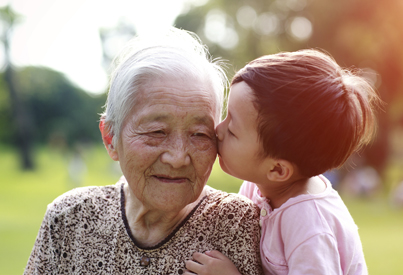
AUSTIN — When it comes to meeting their basic needs, Travis County residents overall have recovered from the recession, according to the CAN Community Dashboard, an annual report that tracks local trends in social, health, educational, and economic well-being. But troubling disparities remain as many struggle to make ends meet, pay for housing, and gain access to nutritional food.
Even though the percentage of people who are low-income in Travis County has declined since 2010, the number of people who are low-income has increased, due to the area’s fast overall population growth. About one of every three Travis County residents are low-income, or earn less than 200 percent of the federal poverty level. In 2013, this was equivalent to $47,248 for a family of four.
“This is about the people who are the working class, that work in the city to keep the city running, and cannot afford to live in the city,” said Ora Houston, Austin City Council Member and a member of the CAN Board of Directors. “These are people who have paid property taxes for years, with little to no services, and are now being priced out of their homes.”
CAN tracks four broad community goals over time to identify where attention and action are needed. The second goal of the CAN Community Dashboard, “Our basic needs are met,” measures housing cost-burdened, food insecurity, low-income, vehicle miles traveled and homelessness. The most recent data for these indicators is now available in the online dashboard, and additional key findings are listed below.
The U.S. Department of Housing and Urban Development considers people to be “cost-burdened” if they pay more than 30 percent of their income for housing and utilities. In Travis County, 36 percent of all households are housing cost-burdened, a percentage that is higher than both the state and national rates. Travis County ties with Dallas County as having the highest housing cost burdened rate among Texas urban counties. Renters are almost twice as likely as homeowners to be housing cost-burdened.
“Many people seeking housing affordability are moving east into unincorporated areas of Travis County,” said Margaret Gomez, Travis County Commissioner for Precinct 4 and a member of the CAN Board of Directors. “But an affordable home is only one piece of the puzzle. Families also need transportation, grocery stores, health care and other services. That is why it is more important than ever for us to work together, across jurisdictions to make sure the needs of all people are met.”
The Capital Area Council of Governance Housing Opportunity Report estimates that 290,000 residents of outlying counties regularly commute into Travis County for work. This is because 90 percent of all jobs in the five-county Austin metro area are in Williamson and Travis counties.
“To help our neighbors get to good-paying jobs, we all need to work together to improve our transportation system,” says Jeremy Martin, CAN Chair-Elect and Senior Vice President of the Austin Chamber of Commerce. “These strategies to reduce our region’s traffic include expanding capacity, increase our use of telecommuting and transit, and improve land use so people can work close to where they live.”
On May 20 the Community Advancement Network, a nonprofit coalition of partners from the government, health, education, business, faith and economic sectors, will release the full 2015 Community Dashboard Report. The Dashboard gauges 17 indicators, including crime, voting, income, food security, housing cost-burdened, health, homelessness, obesity, air quality, high school graduation, college success and unemployment.
For more information, visit www.CANCommunityDashboard.org, or contact Mary Dodd atmary.dodd@austinisd.org or 512-414-0326.

